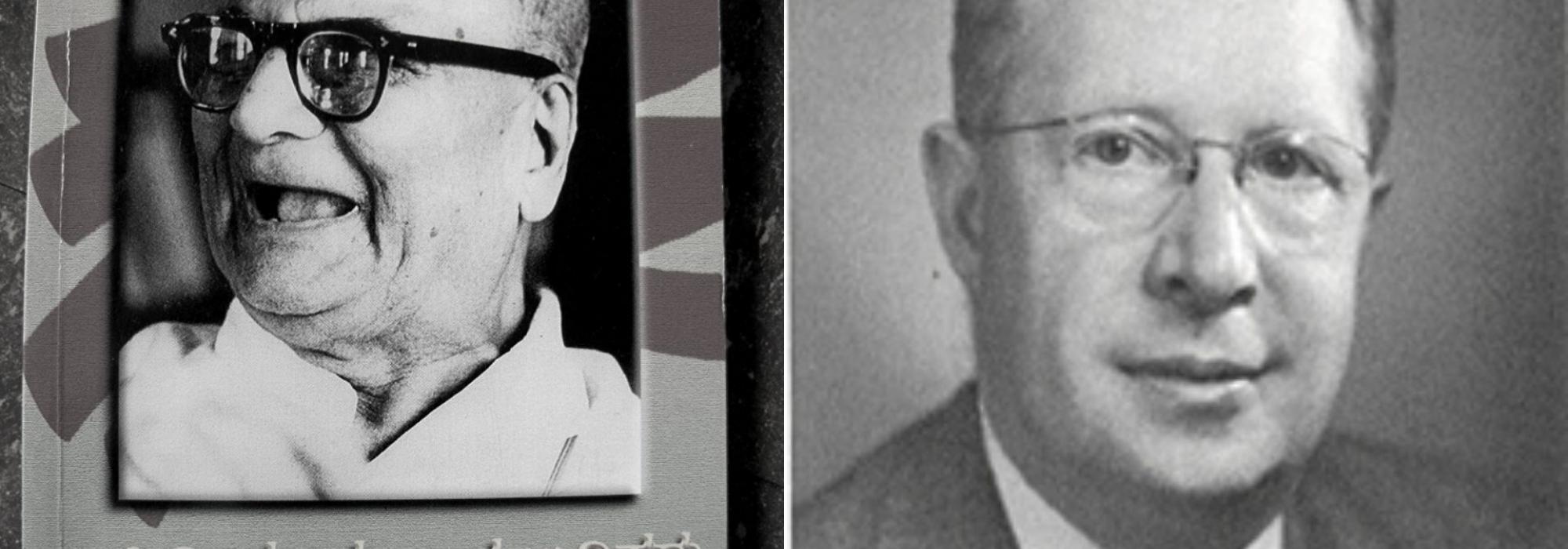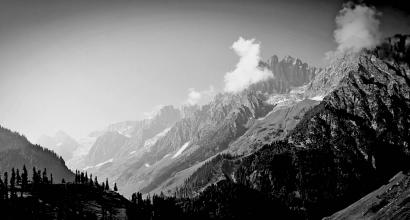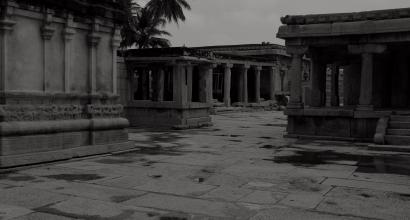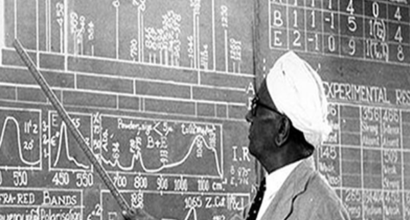Jnapakachitrashale – The Art Gallery of Memories
The eight volumes of DVG’s Jnapakachitrashale constitute an unparalleled literary feat that he attained. These are rare records that portray the social environment of a past era, its lifestyle, and the specialties of personality of scores of people including public eminences and ordinary folks belonging to the previous two generations. These essays, which began in serialized form in various papers from 1953 and were then published as books from 1960 onwards are records nonpareil of the previous era. There is no other recourse but to read them to savour their variety and essence. Keeping in perfect tune with DVG’s fun-loving nature, his sense of humour has exulted throughout these volumes. DVG has written about the domestic and household lifestyles of the most ordinary people with the same enthusiasm as he has about famous personalities, in an eye-arresting manner. A few doses of difficulties and troubles faced by each family; many moments of auspiciousness and joy; poverty and some beliefs that accompanies it; some human effort, some achievement; a quarter of scarcity and three-quarters contentment: overall, there is an element of empathy towards life. This was a way of life characterized by simplicity and non-affectation – this was the typical and most common lifestyle in our country at one point in time. “That era of contentment has been lost and in its place, an age of constant turmoil has begun,” – this used to be one of the refrains of DVG.
Even as DVG’s reminiscences were being published as serials in different papers, it drew responses of admiration from all kinds of people. My close journalist friend, Y.N.K said the following about the series on the Diwans of Mysore: “This is remarkable writing. It looks as though D.V.G. was the only man who kept his eyes and ears open to what went on around him. What were other people doing when such momentous things were going on? Was politics unwanted by anybody at all? Or if others had indeed observed all this, why didn’t they write about it?”
Six decades before Independence – about one-third of this series of articles has for its subject the personality of Sir M. Visvesvaraya and his administrative acumen. Even as it was being published, Srinivasayya, the father of B.S. Subba Rao, associated with our Gokhale Institute, read it without fail each week. On occasion, Srinivasayya told DVG:
“You write about all sorts of random people. The Mysore Country witnessed several Diwans, Deputy Commissioners, and Officers. All of them travelled by cars; all of them wore Rumaals! When I was in service, even I used to tie the Rumaal in a crooked fashion. But what exactly did I accomplish? I stayed in service. After I grew old, I retired – that’s all. What good did I do to my country? Three-fourths of people belong to this category. However, I fully agree with what you have written about Visvesvaraya. Indeed, everybody must agree with it. You see, he’s the only guy…he’s the only guy who corroded his own life night and day by chanting ‘my country, my country,’ and hauled all sorts of troubles upon himself. Poor guy. He labored tirelessly thinking that this country was his father’s inheritance which he had to improve and expand. He is the only great man among all these other people.”
I have heard the same opinion from other people as well. My Guru who taught me Vedanta, Panditapravara M. Lakshminarasimha Sastri also used to read DVG’s series every week. He once told me: “This is called writing that has virtue and spirit. Sri Gundappa’s discourses on the Bhagavad-Gita and his other writings were really good. However, I feel that his writings about Sri Visvesvaraya are ten times more valuable than the ones on the Bhagavad-Gita. Of what use is it ultimately if we merely spout out verses from our Sastras? Vedanta derives real value only when it is reflected in conduct, right? Our people should know Sri Visvesvaraya’s sense of values, commitment, purity in public life, and unmatched competence in carrying out affairs of the state. By acquainting our people with the true nobility of his character, Sri Gundappa has done us all a great favour.”
Literature that Inculcates Samskara
In a discourse given on Akashavani (23-2-1962), DVG mentioned some books which had made a lasting impact on him. Of these, he cited Swami Vivekananda’s From Colombo to Almora discourses and then said before concluding:
“Let’s say a Divine Messenger stands before me and says, ‘You will be exiled to an uninhabited island. If you want a companion, you may take with you as many books as your hands can carry.’ In such a situation, I will select the Ramayana in one hand and the Mahabharata in the other. That much is enough for the lifetime of one person! Aren’t those two, two densely populated worlds by themselves?”
***
Several foreign dignitaries who happened to visit India had made it part of their routine to pay a visit to DVG. One such person was Prof Donald Bishop from Syracuse University. While he had met DVG several times in the past, he had occasion to visit DVG sometime in mid 1971. Their conversation veered towards the political situation in the country. DVG said:
“The mind of part of India is now looking backward in a kind of nostalgia…
I feel that the thought process of our current political class will not help solve our problems. The reason why there was contentment among our people fifty years ago was because there existed some moral principles which everyone had accepted. No matter which political party, faith in Dharma and fear of Paapa (loosely translated as sin) was exactly the same within everyone. And so, in the absence of such a principle which is universally accepted, no matter with what shrewdness you institute the Assembly, Parliament, and Administration, troubles will keep arising. This is true for every country. Let’s look at England. There was the great Gladstone. He was a Liberal and he had lots of disagreements with the Conservative Party. However, neither Gladstone nor his Opposition Party transgressed the orders of the Church.
Politics is not something that emerged today or yesterday. The Mahabharata is indeed filled with politics. The preaching of the Mahabharata is to resolve all complex problems using Dharma as the foundation. It is my belief that this sort of resolution is possible even today, and that the reason for today’s thoughtlessness in politics and economics is due to the lack of conviction in Dharma.”
To be continued




































